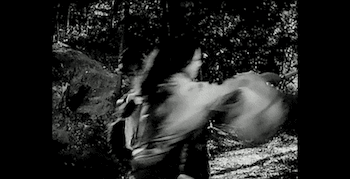Search
To search for an exact match, type the word or phrase you want in quotation marks.
A*DESK has been offering since 2002 contents about criticism and contemporary art. A*DESK has become consolidated thanks to all those who have believed in the project, all those who have followed us, debating, participating and collaborating. Many people have collaborated with A*DESK, and continue to do so. Their efforts, knowledge and belief in the project are what make it grow internationally. At A*DESK we have also generated work for over one hundred professionals in culture, from small collaborations with reviews and classes, to more prolonged and intense collaborations.
At A*DESK we believe in the need for free and universal access to culture and knowledge. We want to carry on being independent, remaining open to more ideas and opinions. If you believe in A*DESK, we need your backing to be able to continue. You can now participate in the project by supporting it. You can choose how much you want to contribute to the project.
You can decide how much you want to bring to the project.

Let’s imagine that art doesn’t exist, and never has, that there are just cultural practices like painting, sculpture, music, poetry, cinema, theatre, dance, sport, gastronomy, photography…well, all that [[As I’m talking about cultural practices I can’t help but point out that the consumption of merchandise, political corruption, war, xenophobia, torture, sexism, the abuse of power, etc., are also cultural practices, lacking a more restricted concept of Culture. ]]. Right. But even if art didn’t exist as a concept, if, for example, a painter, doesn’t want her practice to become an echo of power, a reverberation of public opinion, if the aim is for her labour to acquire a certain autonomy, sooner or later she will have to confront the meaning of her practice. Sooner or later she will have to ask what leads her to paint in one form or another, why she does, “what she does” in the way she does it. Is it chance that guides her hand? Genes? Knowledge? The spirit? Energies of the Universe? The community? Faith? The unconscious? Everything at once? Exactly, she will have to think. So, to know, therefore, for example, if a GIF, – if its production and exhibition is a cultural practice like those mentioned before– complies with the requisites of what a good GIF has to have, one has to think. One has to think about what a good GIF has; one has to think, think about what is said to be an “interesting GIF” consists of, if not, it’s not possible. One, therefore, has to think right up to the end; that is to say, right up to wherever one ends [[No, I’m not going to do it.]]. Ok. This “thinking” can equally be applied to the “reader”, to all of us who “read” these practices. So, as readers, for us to be able to determine if a cultural practice pleases us or not, for example, we have to think. Unless, that is, we believe that everything we feel, simply by being felt, is already legitimated, justified. In that case, there is nothing to say. For the principal attraction of many cultural practices consists precisely in not having to think – or only having to think a little bit – because you understand that the community has already done so for you, and you just allow yourself to be carried along. Be it as an author, actor, or reader, you submerge yourself in the channel and open your heart to the joy of belonging to a community, feeling as if you form part of something bigger. And there is nothing more lovely than feeling as if you belong to a community, however small it may be, and celebrating it over and over again. Moreover, it’s understandable, thinking is not agreeable because we think without being aware of our limitations, which makes us voluntarily abandon ourselves to the elements, figuratively speaking obviously [[And why aren’t we aware of our limitations? Because the damn things don’t stop moving and to find them we have to keep on thinking, which makes thinking a search for limitations, that is, for the construction or detection of spaces.]]. But in the case that, for whatever motive it might be, we decide to think about these practices, we come to the conclusion that what matters least to us as “readers” is whether it pleases us or not. We prioritise the dialectics created by this encounter with alterity, this outpouring of liquidity, let’s just say, not without difficulty, without forgetting that this dialectic is neither a form, nor a technique, so much as a tremor, a movement.
But I write all this because I have accepted the task of endeavouring to write a text about the conditions of the GIF, and I’ll do it the best I can. Right, to get to the point. I’ll start with a short revision of its technical characteristics: animation, digital format, in 2 to 256 colours, variable in size, transparent, endless repetition, the possibility of incorporating sound (be it in a precarious form), lightweight ideal for sharing on social networks. As you see, in principle it seems to house sufficient attractions for the lovers or fans of cultural, spiritual or visual expression to feel impelled to try them out. But something is missing, as ever when technology gives light to a new form of expression and it is not yet entirely embedded in the sphere of cultural value, and this is precisely what seems most interesting to me about this format of graphic exchange [[Photography could reach this state shortly, but by following a two-way journey. After becoming completely immersed in the sphere of value, it has been so abused that fortunately it is losing a large part of its value, which means it can be liberated and once again become useful, in a not so distant future.
]]. TWe can all make a GIF and place it on social networks without any fear of being accused of harbouring elevated artistic pretentions, amongst other things because the majority of those in circulation are appropriations, relatives of collage, of unknown authorship. Moreover, they still maintain the virtue of not being associated with a price tag, which is also an advantage. But, to continue.
To these aforementioned attractions we have to add to its rapid circulation thanks to its ‘natural’ means of exhibition, cyberspace. One that makes it a popular format and means that all the readers of this magazine already know what a GIF consists of, as they’ve come across hundreds of them and witnessed a variety of its typologies. Amongst which I arbitrarily highlight: the celebratory GIF, the amusing GIF, the formalist GIF, the political GIF, the pornographic GIF –here there’s ample margin in the loop– and the advertising GIF–several of these typologies can be united in one single GIF–. Right. Of all the typologies, the most prevalent, and the one I loathe most is the celebratory GIF. Explicit in content, its sole function is to praise, which links it closely to religious images. Social networks are full of GIFs, photographs and texts placed with this sole, repugnant aim of creating community through the worst kind of acclaim and a false sense of belonging. Of the celebratory GIFs I save only those that respect the basic technique of having neither a beginning nor an end [[In the event of not respecting this basic technique a GIF becomes an animated image that meaninglessly repeats itself. It would end up becoming just a short animation. It would be the equivalent of making a video with only one frame, i.e. a clumsy use of the format.]]. This occurs when the lack of a beginning or an end, this repetition, lends it a meaning beyond its “celebratory” or laudatory one, by recurring to an allegorical or aesthetic recourse. Here are some examples of the two types of celebratory GIF:



The formalist GIF remains a painting in movement. In some cases the movement brings some meaning – when it stops being painting and becomes image-time, and in others it doesn’t. The political GIF is usually explicit in its content, and in tune with the celebratory GIF. What it seeks is adhesion, to create community through condemnation or acclaim. The amusing GIF is, therefore, not unlike a visual joke and…like all jokes; there are those that are funny and those that aren’t, under the same criteria of evaluation. The advertising GIF and the pornographic GIF, like the celebratory GIF, also tend to be fairly explicit in content, which leads me to think this is something that not only the majority of GIFS but also the majority of cultural practices share. Here come examples of formalist, political, and amusing GIFS (I’ve skpped the advertising and pornographic GIFs because everybody is familiar with them or can imagine them without little possibility of confusion):



At the beginning, we imagined what if art didn’t exist, if just cultural practices existed, and now we are going to imagine that it does exist. So, if it does exist, what characteristics should an “art GIF” have in order for it to be considered as such? Well the same as a painting, a photograph, an installation, etc., that is for them to be considered an artistic painting, an art photograph, etc., we have to think… Unless that is… etc.

Rafael is a great fan of sailing and winter sports, but what he really likes is everything related to culture and art. He’s crazy about the traditions and folklore of anywhere in the world, the more ancient the better. Fascinated by the feeling of being human, any artistic practice easily moves him. Contemporary cultural practices also delight him. Wherever a cultural activity is celebrated, whatever kind it may be, there you will find him, admiring, with his eyes brimming with tears.
"A desk is a dangerous place from which to watch the world" (John Le Carré)